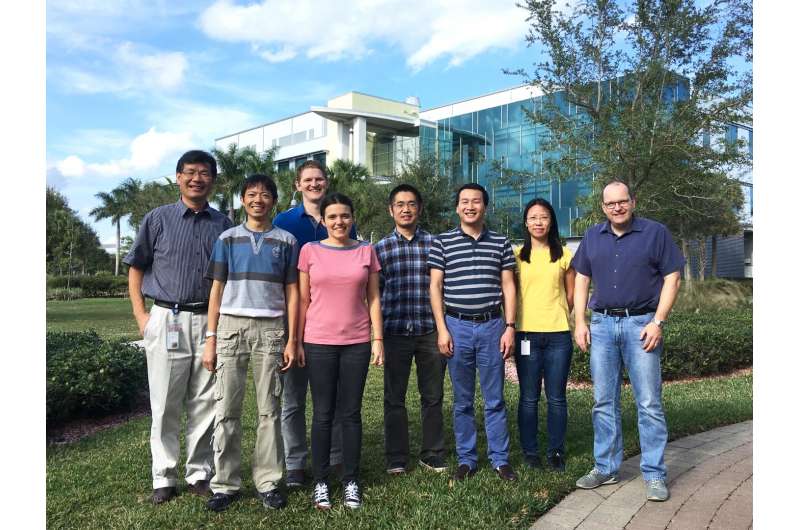Scientists discover new natural source of potent anti-cancer drugs

Scientists from the Florida campus of The Scripps Research Institute (TSRI) have developed an efficient process to rapidly discover new "enediyne natural products" from soil microbes that could be further developed into extremely potent anticancer drugs.
The study highlights microbial natural products as abundant sources of new drug leads. The researchers' discovery process involves prioritizing the microbes from the TSRI strain collection and focusing on the ones that are genetically predisposed to produce specific families of natural products. The scientists say this process saves time and resources in comparison to the traditional approaches used to identify these rare molecules.
The study, led by TSRI Professor Ben Shen, was published today in the journal mBio.
Shen and his colleagues uncovered a new family of enediyne natural products, called tiancimycins, (TNMs) which kill selected cancer cells more rapidly and completely in comparison to toxic molecules used in FDA-approved antibody-drug conjugates (ADCs)— monoclonal antibodies attached to cytotoxic drugs that target only cancer cells.
The scientists also discovered several new producers of C-1027, an antitumor antibiotic currently in clinical development, which can produce C-1027 at much higher levels.
It has been more than a decade since Shen first reported on the C-1027 enediyne biosynthetic machinery, and he speculated then that the knowledge obtained from studying biosynthesis of C-1027, and other enediynes, could be used for the discovery of novel enediyne natural products.
"The enediynes represent one of the most fascinating families of natural products for their extraordinary biological activities," Shen said. "By surveying 3,400 strains from the TSRI collection, we were able to identify 81 strains that harbor genes encoding enediynes. With what we know, we can predict novel structural insights that can be exploited to radically accelerate enediyne-based drug discovery and development."
"The work described by the Shen group is an excellent example of what can be achieved by coupling state of the art genomic analyses of potential biosynthetic clusters and modern physicochemical techniques," said David J. Newman, retired chief of the National Cancer Institute's Natural Products Branch. "As a result of their work, the potential number of enediynes has significantly increased."
Shen's method of strain prioritization and genome mining means a far more efficient use of resources involved in the discovery process, targeting only those strains that look to produce the most important natural compounds.
"This study shows that the potential to rapidly discover new enediyne natural products from a large strain collection is within our reach," said TSRI Research Associate Xiaohui Yan, one of four first authors of the study. "We also show the feasibility of manipulating tiancimycin biosynthesis in vivo, which means that sufficient quantities of these precious natural products can be reliably produced by microbial fermentation for drug development and eventual commercialization."
More information: mBio, DOI: 10.1128/mBio.02104-16
Journal information: mBio
Provided by The Scripps Research Institute


















